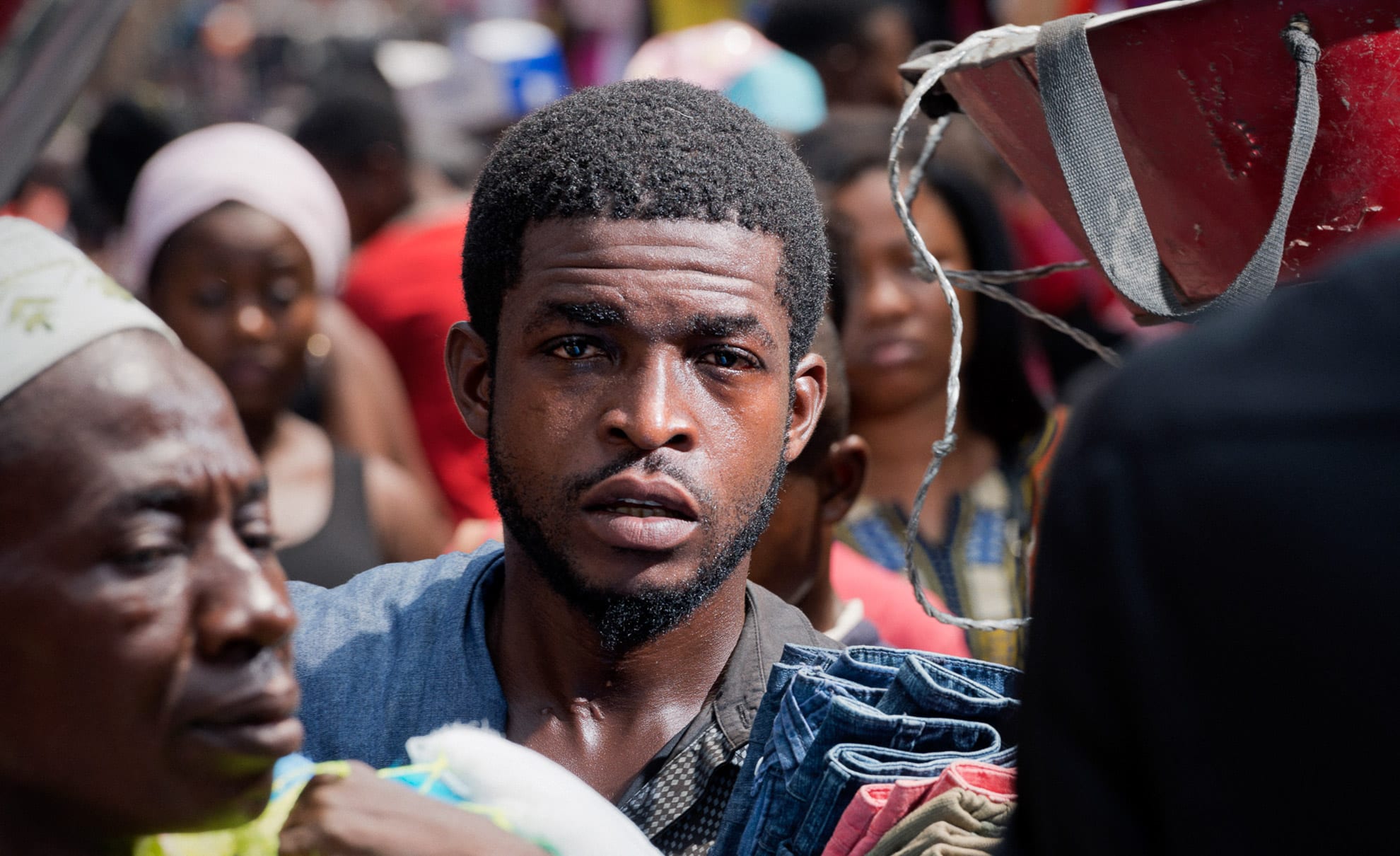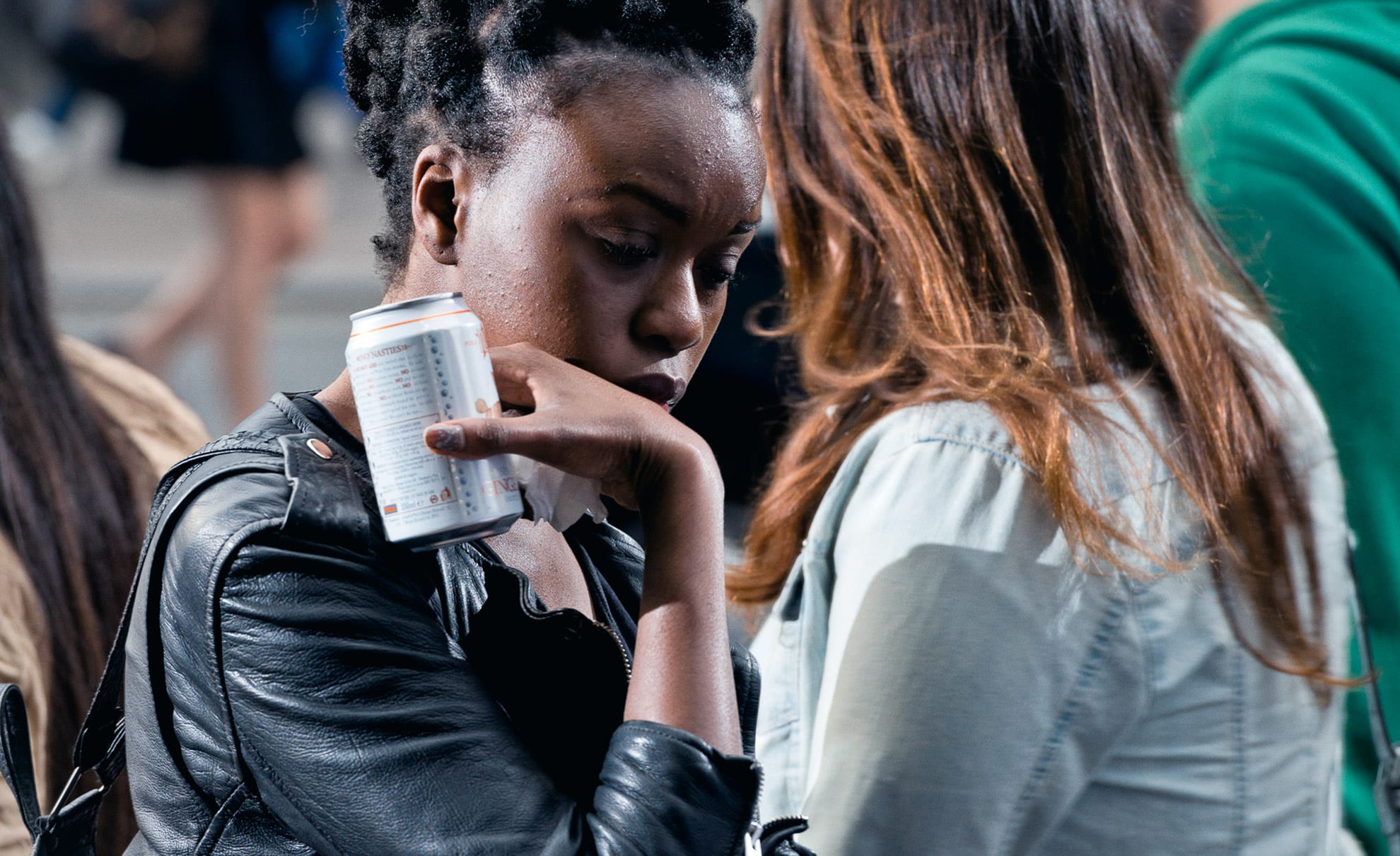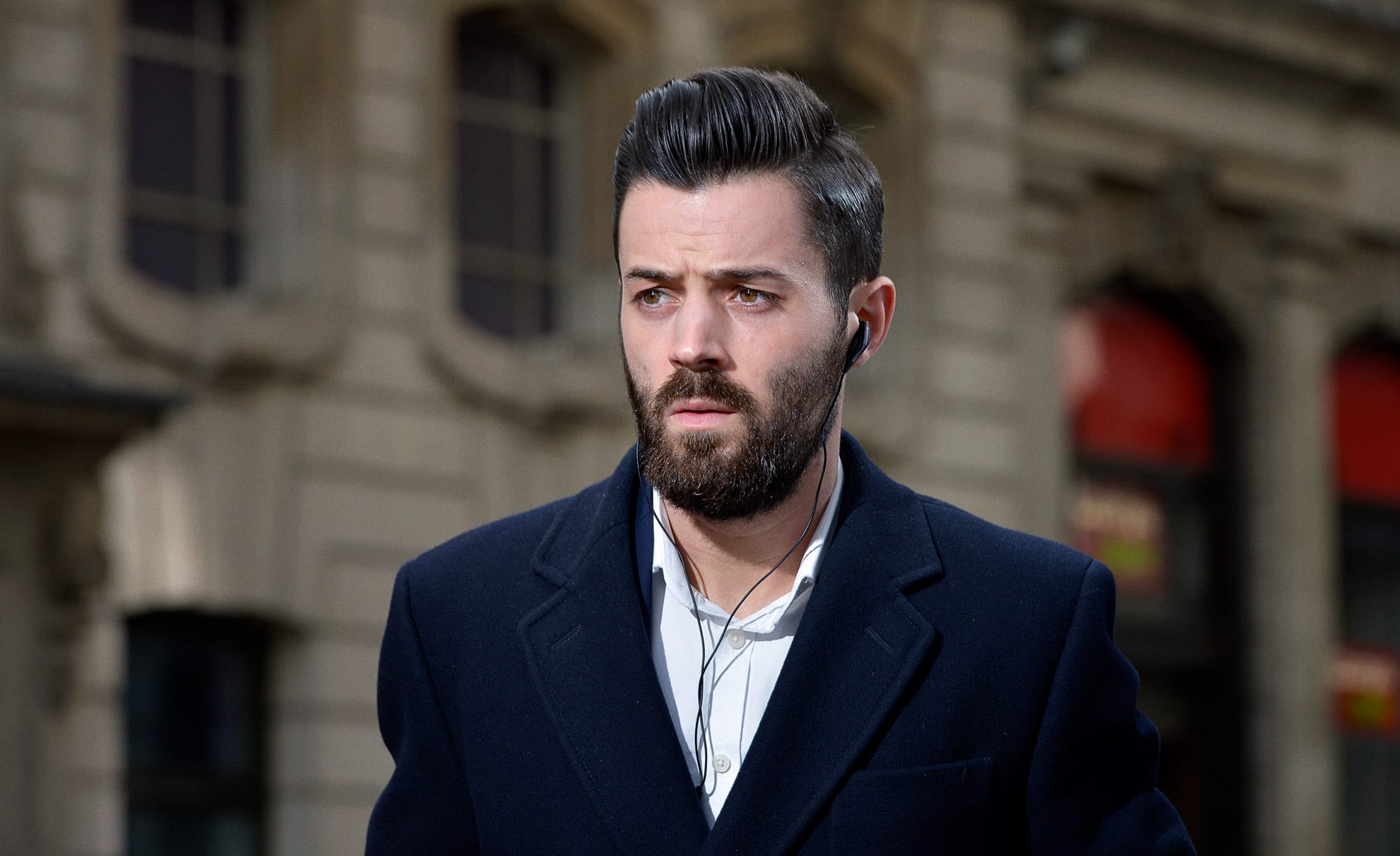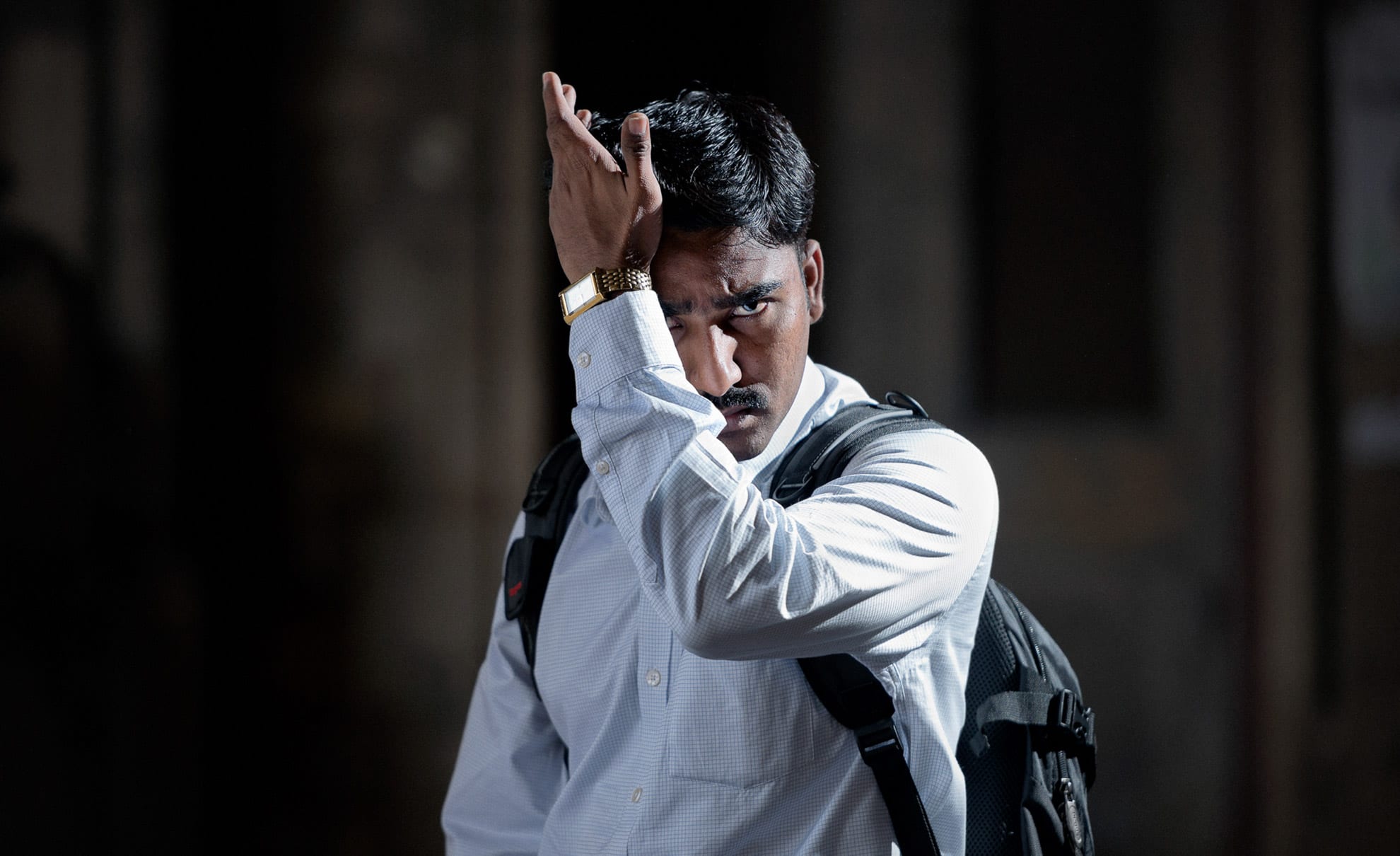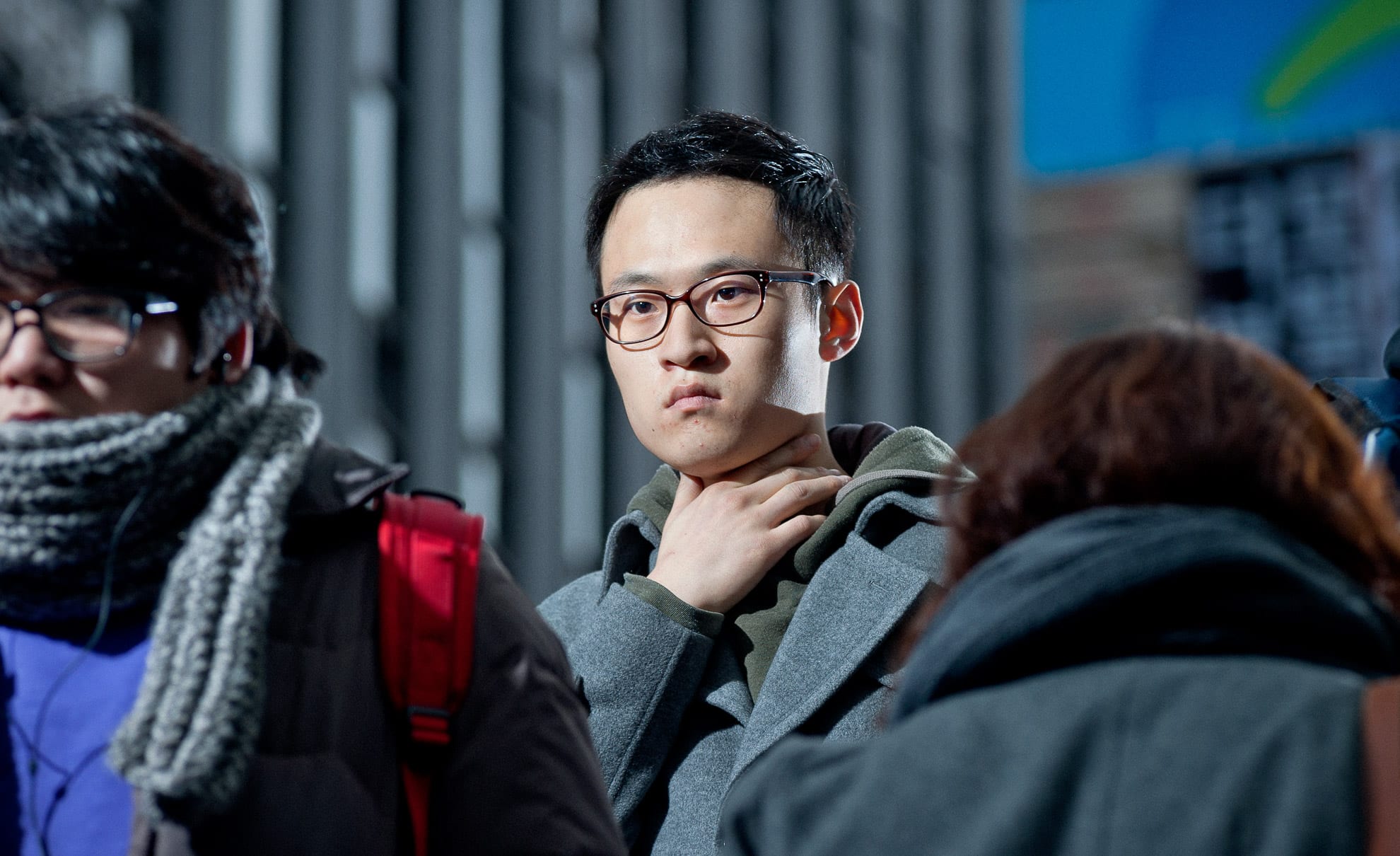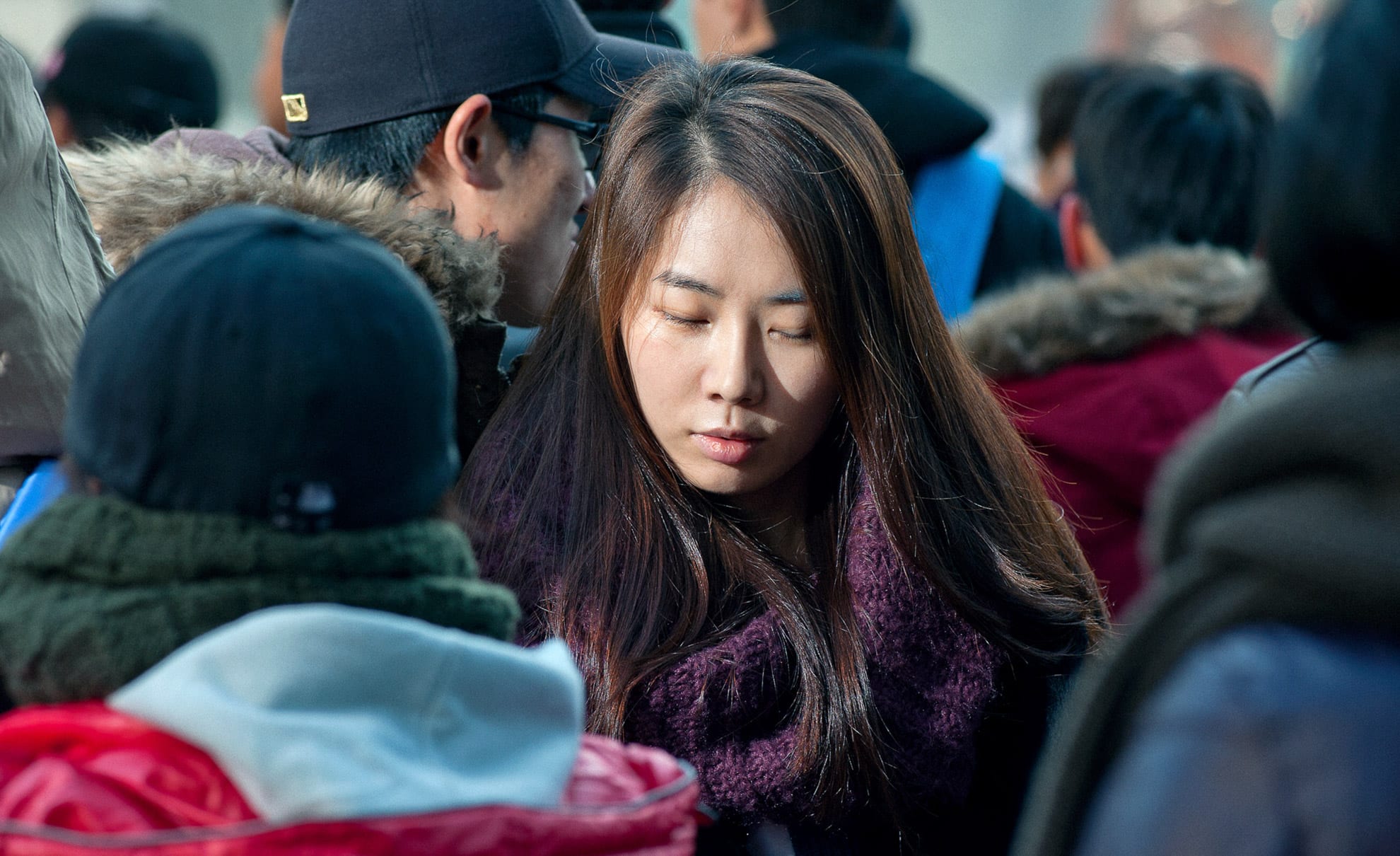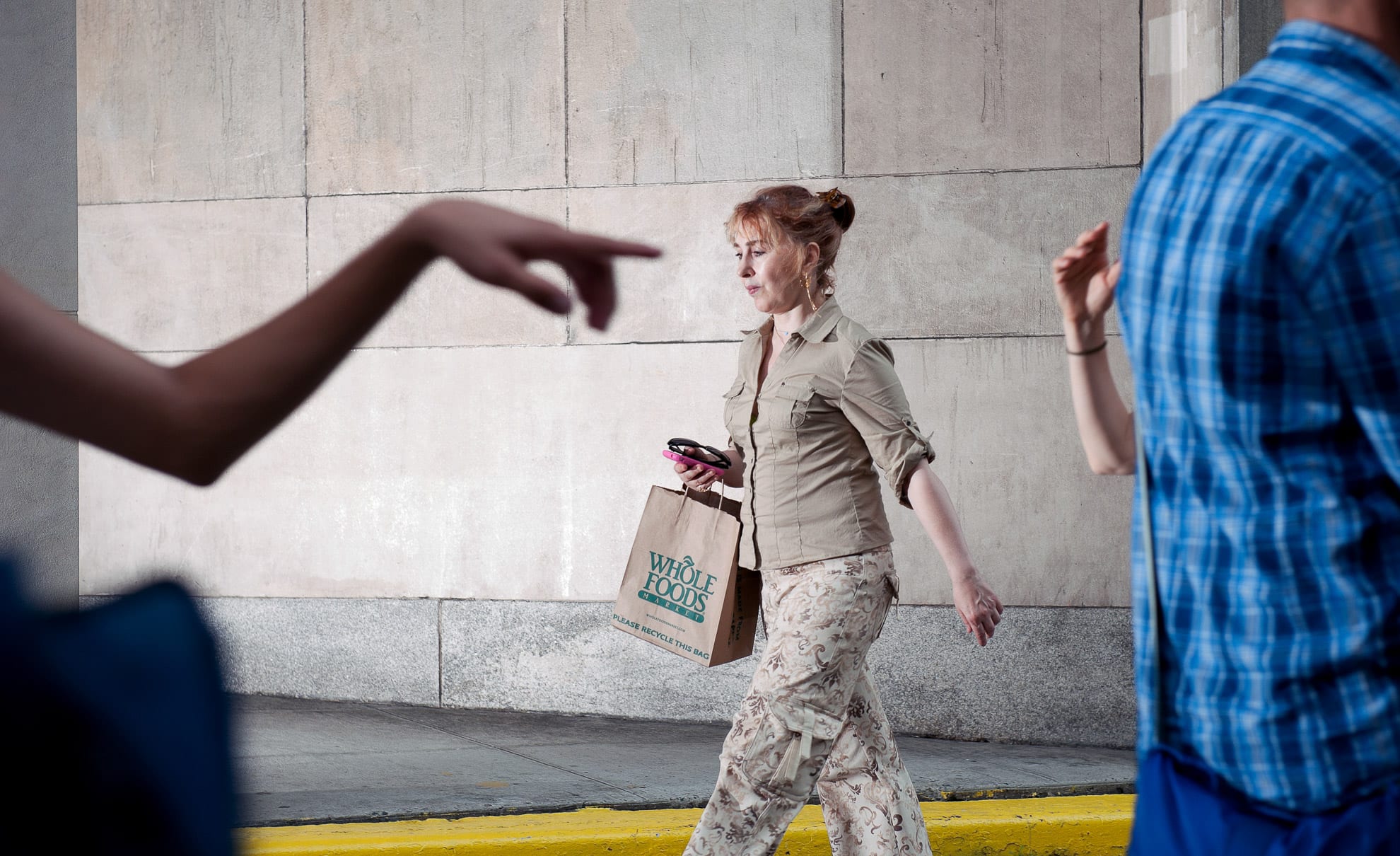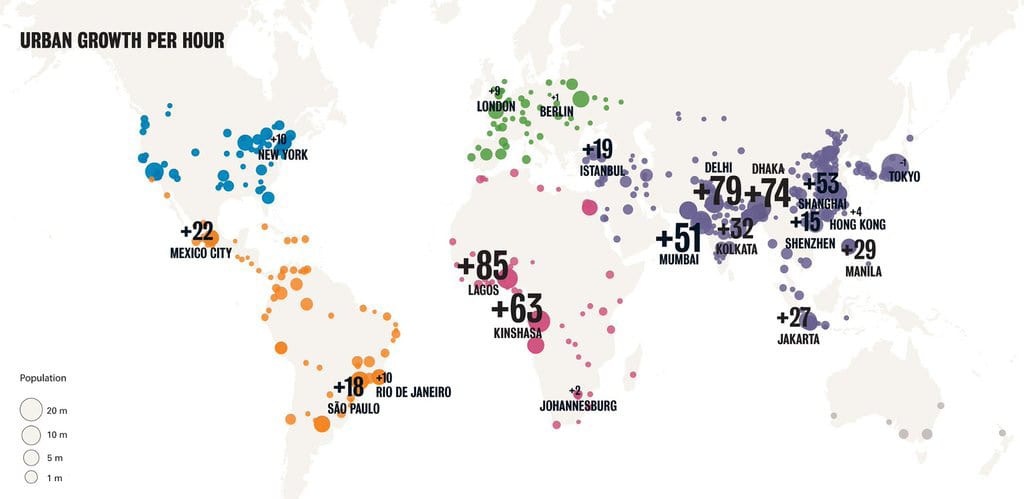In 2011, I started a visual exploration of the consequences of growing population density. I selected nine fast growing megacities around the world that hold 20 million inhabitants, or will reach this number in the next couple of years.
The cities I photograph are ‘on the move’ and its inhabitants are in transit. This in-between-ness is representing the present urban state of mind of unfocussed attention of the city dwellers. Metropolitan life over-stimulates our senses to which we react with indifference and blasé attitude. With the help of telephones, headphones and sunglasses, we detach from space and reality.
I am fascinated by the distances between people as well as the human scale in relation to the built environment. I work in the most crowded streets of cities, where there is very little personal space and people brush-passing each other. I am drawn to the working of the arresting shutter: the unique quality of photography to arrest movement. I try to capture offbeat moments that remain unseen at the everyday speed of life.
I always considered the street a stage where we, the actors, are performing in the decor of the city. In daily life, we are performing social roles and we wear the appropriate mask for that. While commuting the city, we drop this mask and replace it for another one, the mask of ‘self-protection’. I am interested in this mask, because I believe this it gives us a lot of information of the self and the construction of identity.
The anonymity of the man in the crowd is an important part of the metropolitan experience. There are unwritten social rules which provide each individual with a certain space and freedom, as long as we leave the others alone. Within certain boundaries, it is allowed to watch and observe, to look at something in public that is actually private.
This project is relevant because it addresses feelings and emotions we all recognize while commuting the streets. We all have an ambiguous relationship with the city. Surrounded by strangers we feel a strange sense of 'togetherness'; we like to be part of the group but at the same time, we avoid contact with that group. Feelings of isolation and alienation can be pivotal when navigating urban space.
With the use of ‘screens’, we hide behind a mask of indifference. The blasé-attitude already described by sociologist Georg Simmel in 1950 is still prevalent. By the use of the Smartphone, we brought the office into the street. Where we normally only had books and newspapers to hides us, we now have a tools on which we can call, email, text, whatsapp, skype, play games, watch television, shoot photos, edit, publish and send them etc.
Next to that, the phenomena 'stranger' recently got an alarming connotation. The emerging stream of refugees in Europe divided society in fear for the unknown resulted in xenophobia and 'mixophobia'. Where most people focus on cultural differences I am struck, after exploring the cities in my project, how similar we actually are to one another. Because of large-scale urbanization and globalisation, visually we get more alike each other. Despite all our variations in dress, rituals and religion, biologically we are all astonishingly close to one another, a fact that I find very reassuring.
This project is a worldwide document of the human condition focussing on private lives in the public domain. Because of the capacity of photography to freeze motion I am able to show moments of the everyday that normally remain unseen. The work invites the viewer to scrutinize the stranger in an intimate way. Like in a zoo, we are watching ourselves; it holds up a mirror to society.
This project includes photography of the cities: New York, São Paulo, Seoul Mumbai, Hong Kong, London, Lagos, Istanbul and Mexico City. Scroll down to the bottom of the frontpage, to see all images per city.
